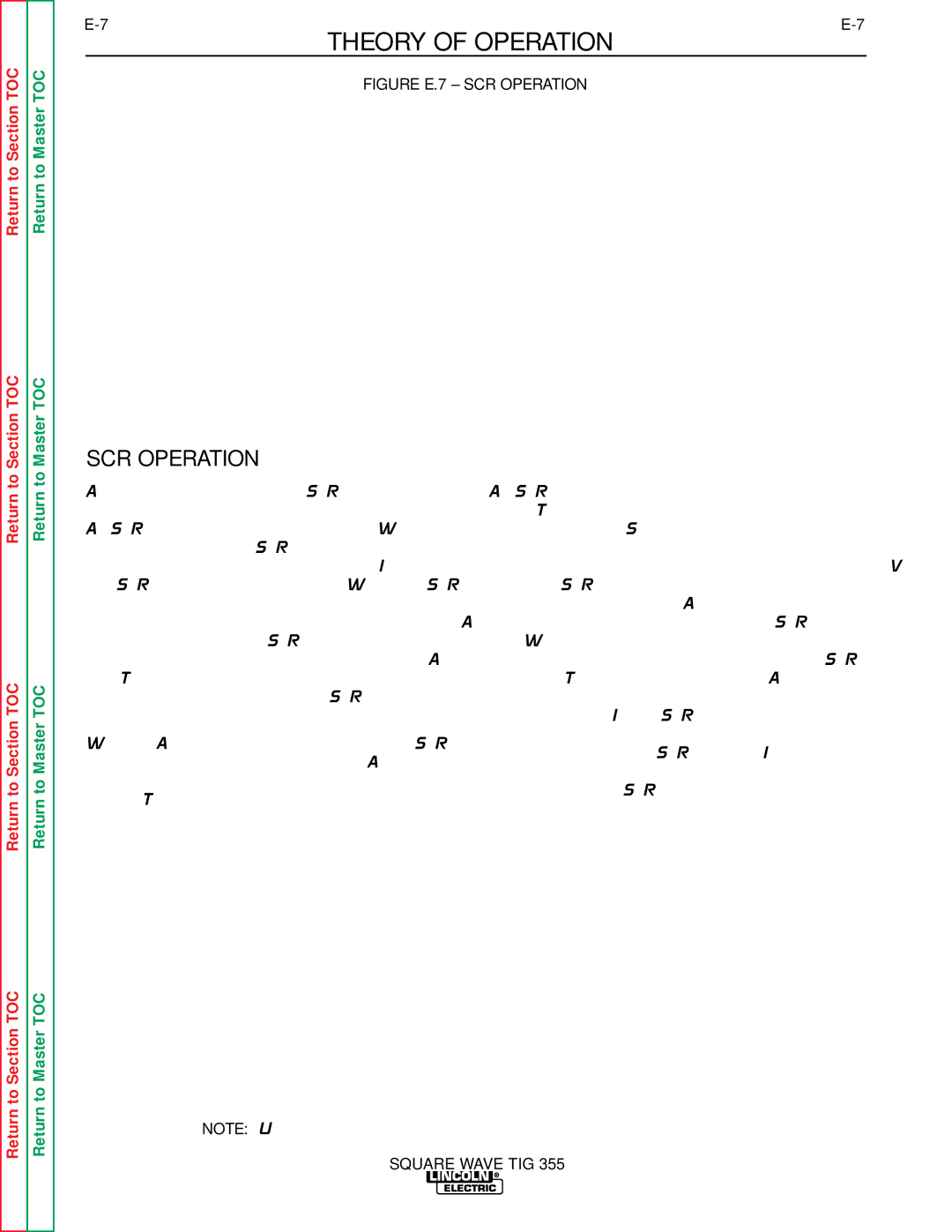
Return to Section TOC
to Section TOC
Return to Master TOC
to Master TOC
THEORY OF OPERATION
FIGURE E.7 – SCR OPERATION
SCR OPERATION
Return
Return to Section TOC
Return
Return to Master TOC
A silicon controlled rectifier (SCR) is a
When an AC supply voltage is applied to the SCR, the device spends a certain portion of the AC cycle time in the ON state and the remainder of the time in the OFF state. The amount of time spent in the ON state is controlled by the gate.
An SCR is fired by a short burst of current into the gate. This gate pulse must be more positive than the cathode voltage. Since there is a standard PN junc- tion between gate and cathode, the voltage between these terminals must be slightly greater than 0.6V. Once the SCR has fired it is not necessary to continue the flow of gate current. As long as current continues to flow from anode to cathode, the SCR will remain ON. When the anode to cathode current drops below a minimum value, called holding current, the SCR will shut OFF. This normally occurs as the AC supply volt- age passes through zero into the negative portion of the sine wave. If the SCR is turned ON early in the positive half cycle, the conduction time is longer, resulting in greather SCR output. If the gate firing occurs later in the cycle, the conduction time is less, resulting in lower SCR output.
Return to Section TOC
Return to Master TOC
NOTE: Unshaded areas of Block Logic Diagram are the subject of discussion.
SQUARE WAVE TIG 355
